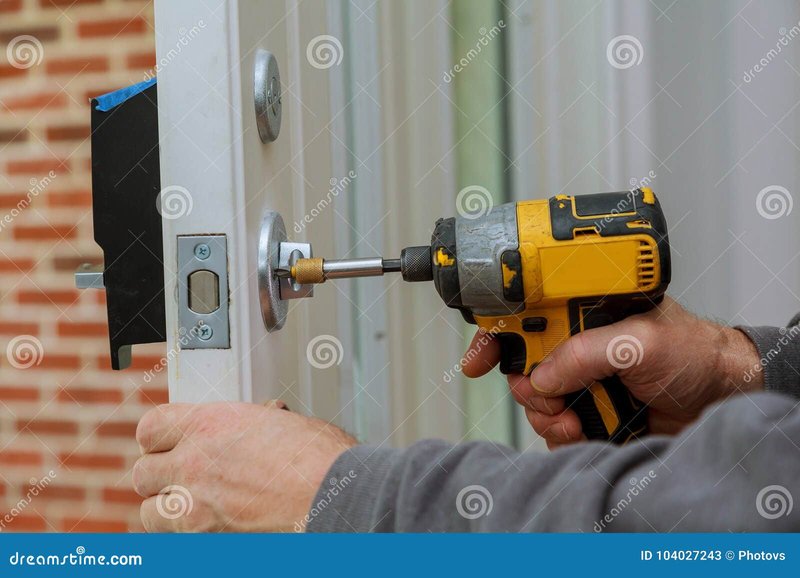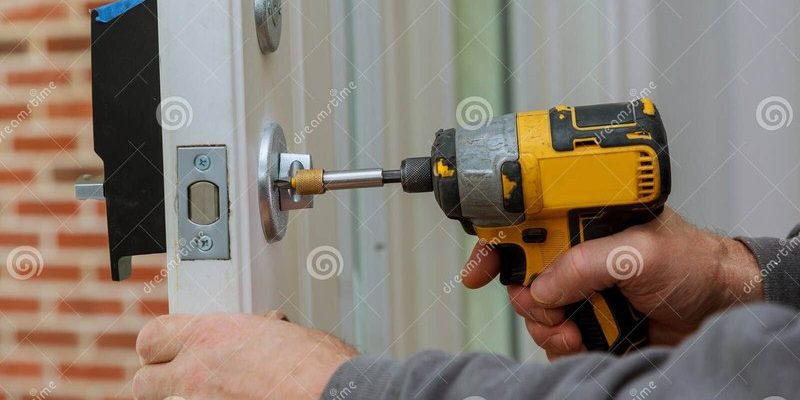
Here’s the thing: tightening exterior door hardware screws isn’t rocket science, but it’s easy to mess up if you don’t have the right tools on hand. And that’s where many people get stuck. You might grab whatever screwdriver is closest, but find it just strips the head or won’t even fit. Different brands and door styles use different screw types—Phillips, flat-head, Torx, and even tiny specialty security screws. So having the *right* tool for the job makes life a whole lot easier (and saves you from dealing with droopy door handles or a stuck remote lock that just won’t sync).
Let me walk you through the best tools for tightening all types of exterior door hardware screws. I’ll break down why certain tools work better, what to look for by screw type and brand, and show you a few pro tips for avoiding stripped heads, stuck fasteners, or battery-powered gadgets that stop working because the plate came loose. Grab your coffee—we’re going in.
Why Tight, Secure Door Screws Matter More Than You Think
Think of your exterior door like the front line of home security. Even the best locks and deadbolts can’t do much if the screws holding them to the door or frame are loose. Besides security, loose screws can cause other headaches: doors that rattle in the wind, hardware that falls off, or electronic keypads that lose their sync because the contact plates shift and break connection. Honestly, it’s like having a great gate that’s only held together with dental floss.
Another thing to consider is *weather exposure*. Rain, wind, and big temperature swings make wood and metal expand and contract. Over time, this movement works screws loose, especially on brands like Kwikset or Yale that use thinner mounting plates. If you have an older home, you might even find original hardware with oddball screw heads—something only a specific screwdriver or bit will fit (talk about frustrating).
So, keeping those screws tight isn’t just about looks—*it’s about reliability and peace of mind.* Whether you’re troubleshooting a stuck smart lock remote or just want your door to close with a satisfying click, the right tools make a world of difference.
Choosing the Right Screwdrivers for Door Hardware
You might be wondering: *Can’t I just use any old screwdriver?* Well, you could try, but you’ll likely end up stripping screws or getting nowhere fast. Door hardware varies by brand and model, but most exterior screws fall into a few categories:
- Phillips head: Most common, used by brands like Schlage and Kwikset.
- Flat-head (slotted): Older doors or vintage locks often use these.
- Torx/star: Gaining popularity for added security in higher-end models like Yale or Baldwin.
- Security screws: Some electronic locks and remote-controlled keypads use tamper-proof heads.
Here’s what works best:
- Magnetic screwdriver set: Get a set with multiple heads (Phillips, flat, Torx). The magnetic tip saves a ton of fumbling, especially for longer screws buried in awkward spots.
- Precision screwdrivers: For tiny keypad remotes or battery compartment screws. Brands like Klein Tools or Wiha have compact versions that don’t strip fragile heads.
- Ratcheting screwdrivers: Perfect if you have a lot of screws to tighten. The ratcheting action speeds things up—you won’t have to reset your grip every turn.
Honestly, investing in a quality set saves you future headaches. Keep it in an easy-to-grab spot, and you’ll never struggle with a loose handle again.
Cordless Electric Screwdrivers: When Speed and Power Matter
Cranking away at rusty screws by hand is nobody’s idea of fun—especially if your storm door has a dozen fasteners or you’re dealing with a stubborn strike plate. That’s where cordless electric screwdrivers shine. They aren’t just for pros. A good electric screwdriver (think brands like DEWALT, BLACK+DECKER, or Milwaukee) takes the grunt work out of even the toughest screw.
Why do they work so well for exterior doors? For one, many of these screws are longer—sometimes 2–3 inches—so turning them by hand can feel endless. Plus, doors and frames aren’t always a perfect fit. If you’re troubleshooting a lock reset or replacing a battery compartment on a smart remote, you need quick, controlled torque—exactly what a cordless driver gives.
Here’s the thing: go for a model with adjustable speed and a clutch. That lets you pick just enough force, so you won’t strip delicate screws or crack thin mounting plates. Also, make sure your bit set includes all the basics (Phillips, flat, Torx), since door hardware is notorious for mixing and matching screw types—even within the same brand.
A final word of advice: keep an eye on battery life, especially for wallet-sized electric drivers. Nothing’s more frustrating than a half-tightened door plate and a dead battery. Always check the charge before starting a project.
Getting Past Stubborn or Stripped Screws
Let’s be real: not every screw comes out clean. Over time, outdoor exposure can rust screws solid or wear down the head so badly you can’t get a grip. If you’re left with a spinning screwdriver and a stubborn fastener, don’t panic—there are tricks and tools to help.
- Impact driver: Unlike regular drills, impact drivers use quick bursts of twisting force. This “hammering” motion helps crack loose stuck or over-torqued screws. They’re especially handy for big deadbolts or old door hinges that won’t budge.
- Screw extractor set: If the screw head is stripped (rounded out), grab a screw extractor. These come in kit form and work with a drill or screwdriver. You drill into the head with the special bit, and it bites in reverse to twist the screw out. Lifesaver for DIYers.
- Penetrating oil: Spray a little (like WD-40) onto rusty screws. Let it soak in for a few minutes, then try again. Don’t force it—if it doesn’t move, go for an impact driver or extractor.
One tip: always use the right-size bit. Too small, and it’ll strip the screw. Too big, and it won’t fit. Brands like Milwaukee, Bosch, and Irwin make extractor kits that cover all the common door hardware sizes.
Specialty Tools for Security Screws and Electronic Locks
If your door has a keypad, remote deadbolt, or fancy “smart” lock, you’ll probably run into security screws at some point. These are designed to keep thieves out, but they also slow down anyone trying to change a battery or sync a new remote.
What do you need to handle these oddballs?
- Security bit set: This is a must-have if you own a smart lock or any kind of electronic keypad. Security bits include Torx with a pin (“tamper-proof”), spanner, tri-wing, and more. Brands like DEWALT and Wiha make affordable bit sets that cover all the bases.
- Precision pliers: If a tiny screw goes flying (it happens), needle-nose pliers help fish it out from under the door or behind the trim. They’re also great for starting short screws in tight battery compartments.
- Mini ratchet driver: For remote lock battery replacement or tight spaces, a mini ratchet lets you turn screws without the long handle getting in the way.
If you’re not sure what screw head your electronic lock or remote uses, check the brand’s support site—Schlage, Kwikset, and Yale all post diagrams. Or, just try the most common bits from your set until something fits snugly, *not loosely*.
Manual vs. Power Tools: When to Use Each
Manual screwdrivers have one big advantage: control. When you’re working with soft door trim, delicate glass panes, or antique hardware, nothing beats the feel of turning a screw by hand. You’re far less likely to over-tighten and crack the wood or strip out a mounting hole. If you’re swapping out the code battery in a remote lock, a hand tool helps you avoid damaging tiny screws or plastic.
But sometimes, power is the name of the game. Power tools, especially cordless electric screwdrivers or impact drivers, *save your wrists* on big jobs—think installing a new strike plate on a steel door, or tightening a dozen screws on an insulated storm door. They’re also lifesavers if you’re troubleshooting a keypad that won’t reset because a plate shifted loose.
Here’s my personal rule of thumb:
If the screw is visible and easy to reach, manual tools work best. If the screw is hidden, stuck, or there are a lot of them, grab the power tool.
Mixing both is a smart move. Start with a power tool for speed, then “finish” the last turn or two by hand for precision. Your hardware—and your hands—will thank you.
Must-Have Door Screw Tightening Kit: Building Your “Go Bag”
If you want to be ready for anything, put together a small kit with everything you’ll ever need for exterior door hardware screws. I keep mine in a pouch near the entryway, and honestly, it’s saved me from many last-minute calls to the locksmith or the classic “Can you fix this?” question from family.
Here’s what to include:
- Multi-bit screwdriver (magnetic) with Phillips, flat, and Torx heads
- Precision screwdriver set for remotes, keypads, and battery covers
- Cordless electric screwdriver with fully charged battery and assorted bits
- Security bit set for electronic or remote deadbolts
- Screw extractor kit for stripped or stuck hardware
- Penetrating oil (small can or tube)
- Needle-nose pliers for grabbing lost screws or tight spaces
You could get fancier, but these basics will cover every situation—from tightening a sagging door handle to troubleshooting that one remote lock that keeps losing sync. If you want, toss in a small flashlight and a mini level. You’ll be prepared for just about anything your front door throws your way.
Brand-Specific Tips: Schlage, Kwikset, Yale, and More
Different brands don’t just use different locks—they use different screws, mounting plates, and battery setups. If you know what you’re working with, you can save yourself a lot of frustration.
- Schlage: Uses mostly Phillips screws, but their keypad series sometimes hide security Torx under the battery cover. Their smart locks often have a tiny reset screw—get a precision Phillips or Torx for that.
- Kwikset: Loves mixing flat and Phillips heads, especially on the strike plate and latch. Older models (pre-2010) might have oddball flat-heads only found in multi-bit kits.
- Yale: Higher-end models use Torx or security screws throughout, so a good bit set is a must. If your remote won’t pair or reset, always check the battery and cover—there’s usually a hard-to-spot screw holding it shut.
- Baldwin, Emtek, and “designer” brands: Often use hidden screws or set screws requiring small Allen (hex) keys. If you’re replacing a handle, keep a tiny Allen wrench handy.
One thing to remember: if a screw isn’t moving, *don’t force it*. Brands sometimes use threadlocker on security screws. If needed, heat (from a hair dryer) or a dab of oil loosens things up.
Wrapping It Up: A Little Effort, Big Payoff
At the end of the day, keeping your exterior door hardware tight and secure comes down to having the right tools and knowing what screw you’re up against. Whether you’re using a simple manual screwdriver, a cordless electric model, or specialty bits for those sneaky security screws, a small investment in quality gear pays off in long-term peace of mind. No more rattling handles, stubborn keypad remotes, or plates coming loose in a storm.
So next time you hear a door rattle or find your smart lock won’t sync, don’t just jiggle the handle and hope for the best. With the right tools on hand, you can tighten up your home’s first line of defense—quickly, safely, and with confidence. All it takes is a little know-how and the right screwdriver. Now you’re ready for whatever your front door throws your way.
